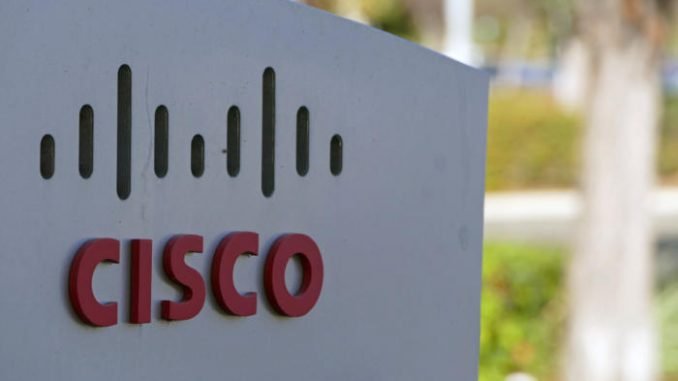

My research shows that the combination of SaaS and on-premises software is now a $650 billion market that has seen a steady growth of 6 percent per annum over the past five years. Today, almost all areas of IT are sold at least partially as software, including applications, security, storage and network infrastructure. Software is agile, enables rapid innovation and is a key component of digital transformation.
This is one reason why enterprise agreements (EAs) for software have become increasingly popular with corporate buyers. Enterprise agreements are software site licenses that are issued to a large company that brings consistency to pricing and allows for the widespread use of the application throughout the company. EAs have become a common option for almost every large software company today.
Contents
+ Also on Network World: Has Cisco broken out of the network hardware box? +
Software purchasing can be highly complex, as businesses need to navigate through the quagmire of different options and usage rules. ZK Research has found that license complexity causes companies to exceed their budgets by an average of 28 percent every year. Also, “truing up” licenses is time consuming, costly and often involves penalties and retroactive fees.
Many businesses have told me that the large software vendors often use the threat of a software audit as a way to force companies to upgrade software before they are ready to. In other words, the complex software licensing in place holds the customer hostage to the whims of the vendor. This may not seem fair, but it is all too often the norm in the software world. Customers need and want a simpler way of buying software, which is why software subscription revenue grew 19 percent from 2015 to 2016 and now totals $150 billion, with 45 percent of companies now using enterprise software agreements when they buy cloud services.
Cisco is a company that most think of as being hardware centric, but it has rapidly been changing to a software model. In 2015, the company introduced its Cisco ONE pricing structure for some products and then extended it to security at the end of 2016. Cisco ONE effectively decoupled the purchasing of hardware and software. Also, the collaboration team has simplified purchasing through different bundles, such as the Cisco User Connect License (CUCL) and the Cisco Unified Workspace License (CUWL). However, the company has never had a simple, cross-architecture enterprisewide option for its customers.
Cisco EA simplifies management of Cisco software
This week, Cisco announced its new enterprisewide agreement, which is designed to help its customers simplify the management of Cisco software and get the most of their technology investments. Cisco has many software products, and the Cisco EA should change the way customers buy, deploy, adopt and upgrade the technology.
The most unique and valuable element of Cisco EA is how it enables customers to handle growth simply and cost effectively with its 20 percent growth allowance and “True Forward” provision. Customers can use the 20 percent growth toward unforeseen increased needs without penalty or having to purchase more licenses. Also, where almost every other software vendor handles the true up process with a periodic review and then bills retroactively for over usage, Cisco offers True Forward as a substitute.
The Cisco EA seems very pro customer in that if the 20 percent allowance is exceeded, the True Forward provision means there will be no retroactive charges or other fees. Instead, the contract will be revised at the beginning of the next billing period. I’m not fully aware of every other software companies EA policies, but Cisco’s True Forward (versus true up) seems to be unique in the industry.
Cisco EA covers a broad set of products and support services across its portfolio. These include:
- Collaboration: Cisco Spark Flex Plan, Cisco Unified Communications Suite, Cisco Meeting Server add-on Suite, Cisco WebEx On-Premises Suite and others
- Infrastructure: Includes Cisco’s infrastructure and data center technologies delivered through Cisco ONE Software suites: Switching, Wireless, WAN, Data Center Networking, Data Center Cloud and Compute, among others
- Security: Email Security Suite, Cloud and Web Security Suite, Policy and Visibility Suite and Security Essentials Suite
The Cisco EA also provides a degree of flexibility to its customers, as it allows them to deploy their software on premises, in the cloud or hybrid. Cisco isn’t trying to dictate how customers deploy their software—that’s up to the business—so Cisco EA was designed to accommodate any type of deployment model. Also, customers can add software suites to their Cisco EA contract when needed and port licenses from existing hardware to new hardware.
Also, businesses with active Software Support Services (SWSS) are able to add any new features or innovation that Cisco delivers within the suite over the contract term (3-5 years). To help customers understand what they’ve bought, Cisco EA includes access to an online portal that shows what licenses have been purchases, when they were deployed and when the renewal dates are. This is far superior to the “spreadsheet management” that many customers use.
As businesses look to become increasingly agile and digital, they will rely heavily on their software investments. Cisco has talked the talk of being a software company for years, and with the long overdue Cisco EA, it’s finally walking the walk as it provides a simple, flexible way to use Cisco technology from a single enterprisewide agreement. This is something every Cisco customer of any significant size should be looking at.
